Kartal Pendik Masterplan Breakdown
“The project is to constitute a sub-centre on Istanbul’s Asian side to release the pressure on the historic centre. The site is being reclaimed from industrial estates and is flanked with the small grain fabric of sub-urban towns. The parametricist taboo of unmediated juxtapositions implied that we took the adjacent context – in particular the incoming lines of circulation – as an important input for the generation of the urban geometry. Maya’s hair dynamic tool achieved a parametrically tuned bundling of the incoming paths into larger roads enclosing larger sites. The resultant lateral path system that exhibits the basic properties of Frei Otto’s minimizing detour network. The longitudinal direction was imposed via a primary artery with a series of subsidiary roads running in parallel.” (Schumacher,2008) For more information please watch the video .
Download link to project files package.
Depending on the adjustable parameter of the thread’s sur-length, the apparatus – through the fusion of threads – computes a solution that significantly reduces the overall length of the path system while maintaining a low average detour factor. (Schumacher,2008) However the following experiment is developed using Rhino and Grasshopper instead of Maya, so the results are similar. The definition logic is to connect the intersection points between the area of interest and the major road and thus to create a network. It is then refined by deleting the connections which do not meet the criteria: fall outside the domain of [400,2000] metres length and form angles outside the domain of [0,60] degrees with the area boundary at their end points. The successful lines are then used in wool-thread model simulation.
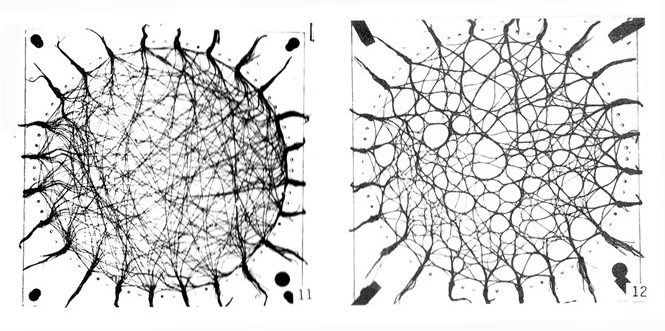
Marek Kolodziejczyk, Wool-thread model to compute optimised detour path networks, Institute for Lightweight Structures (ILEK), Stuttgart, 1991
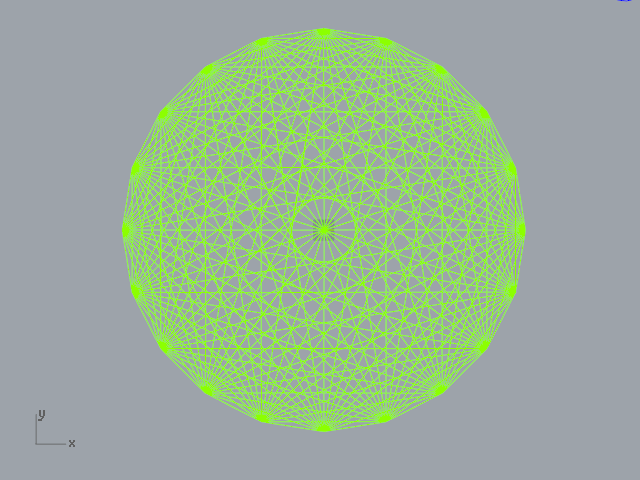
Wool-thread simulation

Project Definition
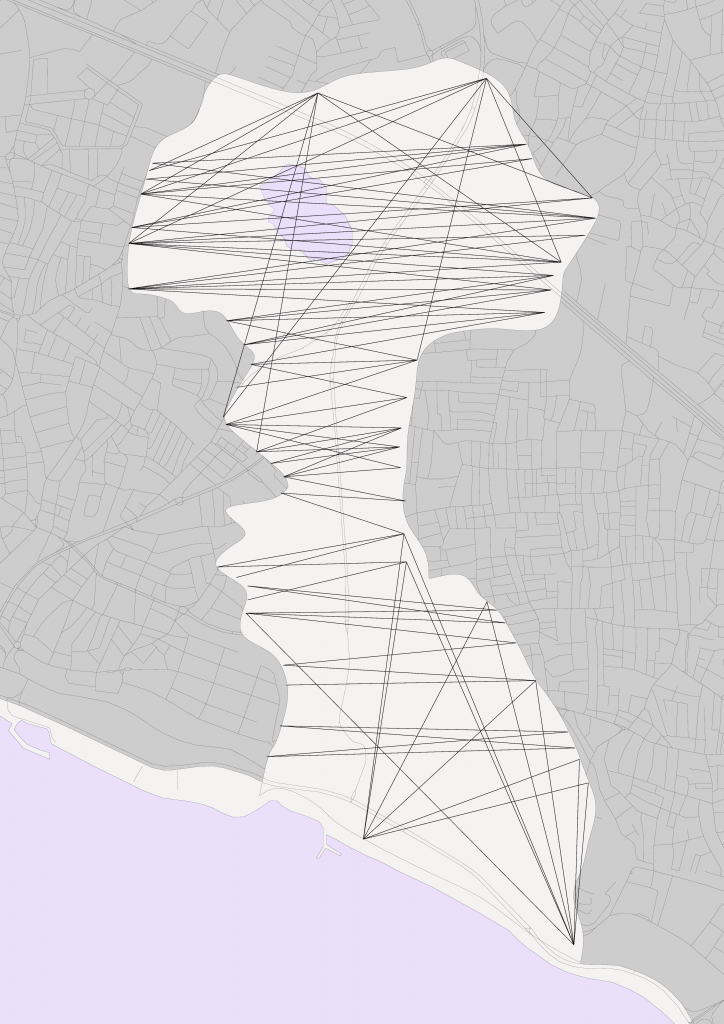
Initial Road Connections
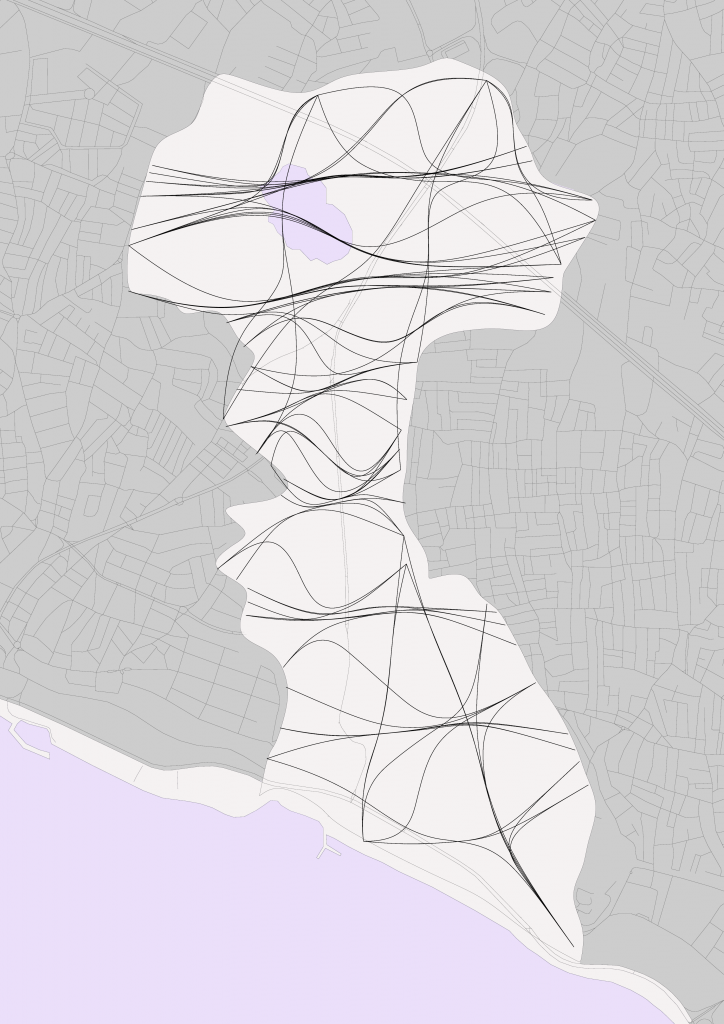
Resulted Road Connections
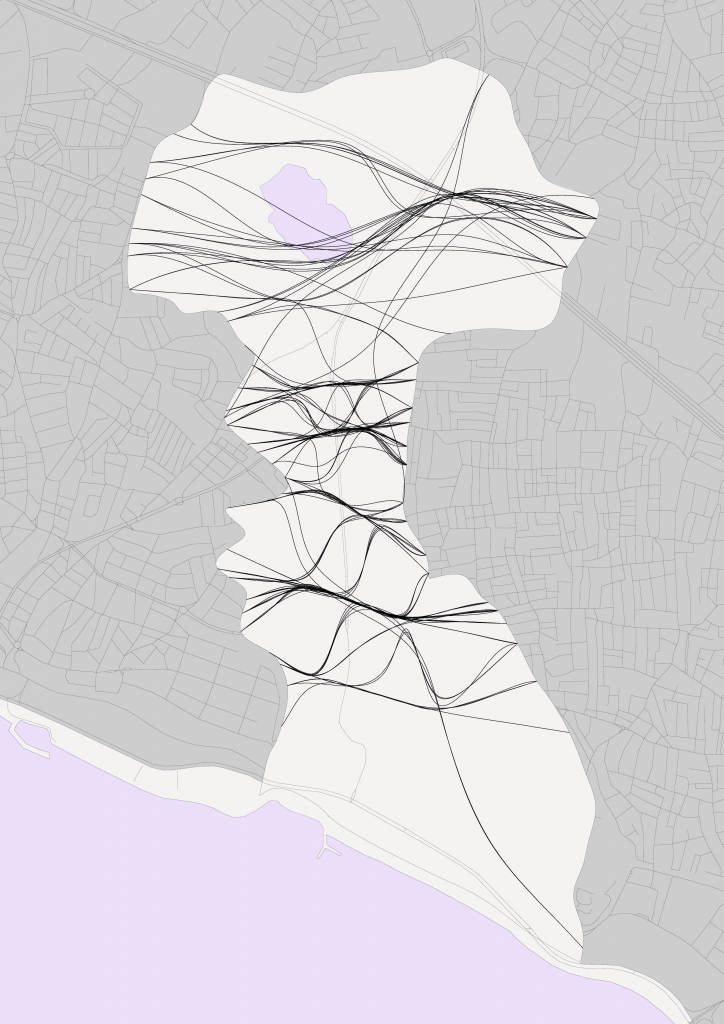
Resulted Road Connections with Lake calculations included
24.09.15 After a few months break from the project I had some thoughts how to push it further. Next steps I made were towards the next stage of the project – developing deformed grid. Guessing exact parameters is almost impossible, so instead many sliders were included in the definition for manual control. These were used to achieve the most similar variation of the grid to the original design. It may have been said somewhere above in a true parametric design the manual work should be kept to minimum, because often behind such manually controlled sliders are parameters based on intensive research. However lets continue. The deformed grid was developed by using the boundary curve of the area of interest ,which was broken into 4 parts- North, East, West and South. I this particular scenario the East/West pair seem to play crucial role, because their are longer than the North/South pair which means having more site information. The main idea for the deformed grid is adaptation or integration (which ever is more appropriate) to the surrounding context. Apart from East/West curves another constant is the design is the central spine curve. Using the best to fit method several curves longitude curves where created by ‘tweening’ the E/W curves and the central spine curve at specific parameters. These longitude curves serve as the base of the deformed grid. They are split into segments and the control points are use to move to or away from preselected attractor and repeller points to create the later deformed grid design. The final longitude and latitude curves are used to split the area into regions/blocks which were offsetted inwards to create the roads. For more detailed breakdown follow the Grasshopper definition above.
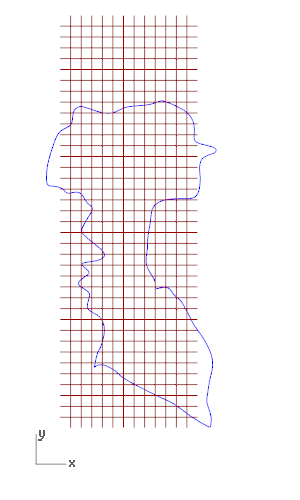
Grid Deformation
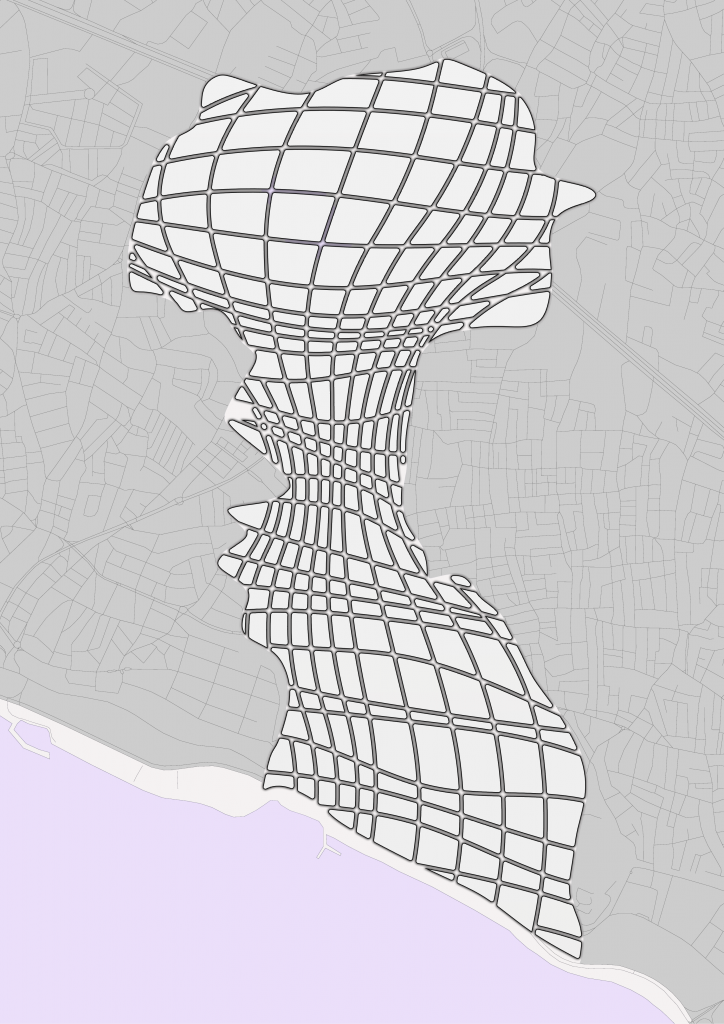
Deformed Grid
21.05.16 To finalise the project the region are extruded. The extrusion options are endless. Below are shown extrusion by distance of regions to middle curve, which creates a valley effect and extrusion by size of region, following ‘the larger the taller’ logic.
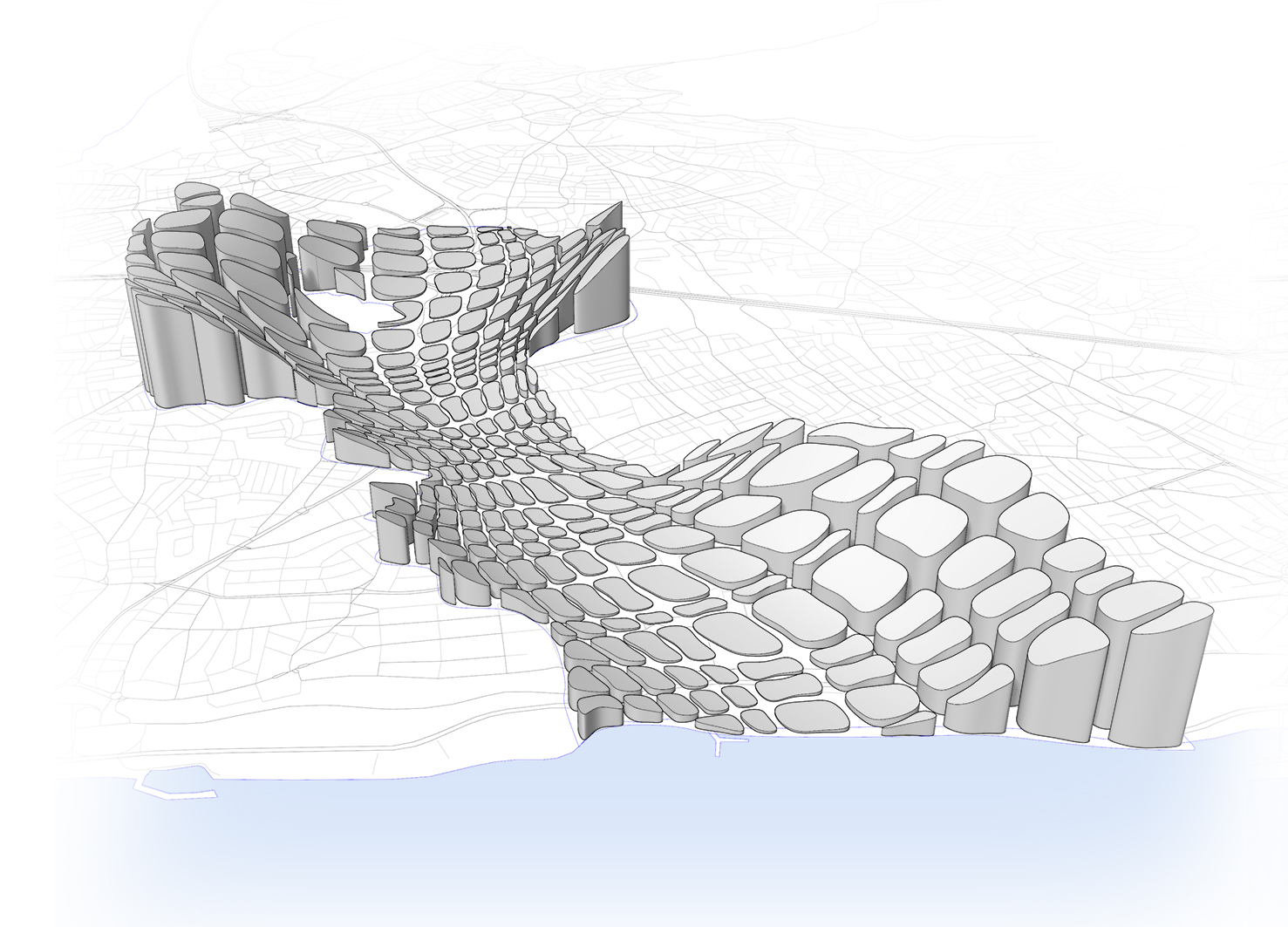
Extrusion By Proximity
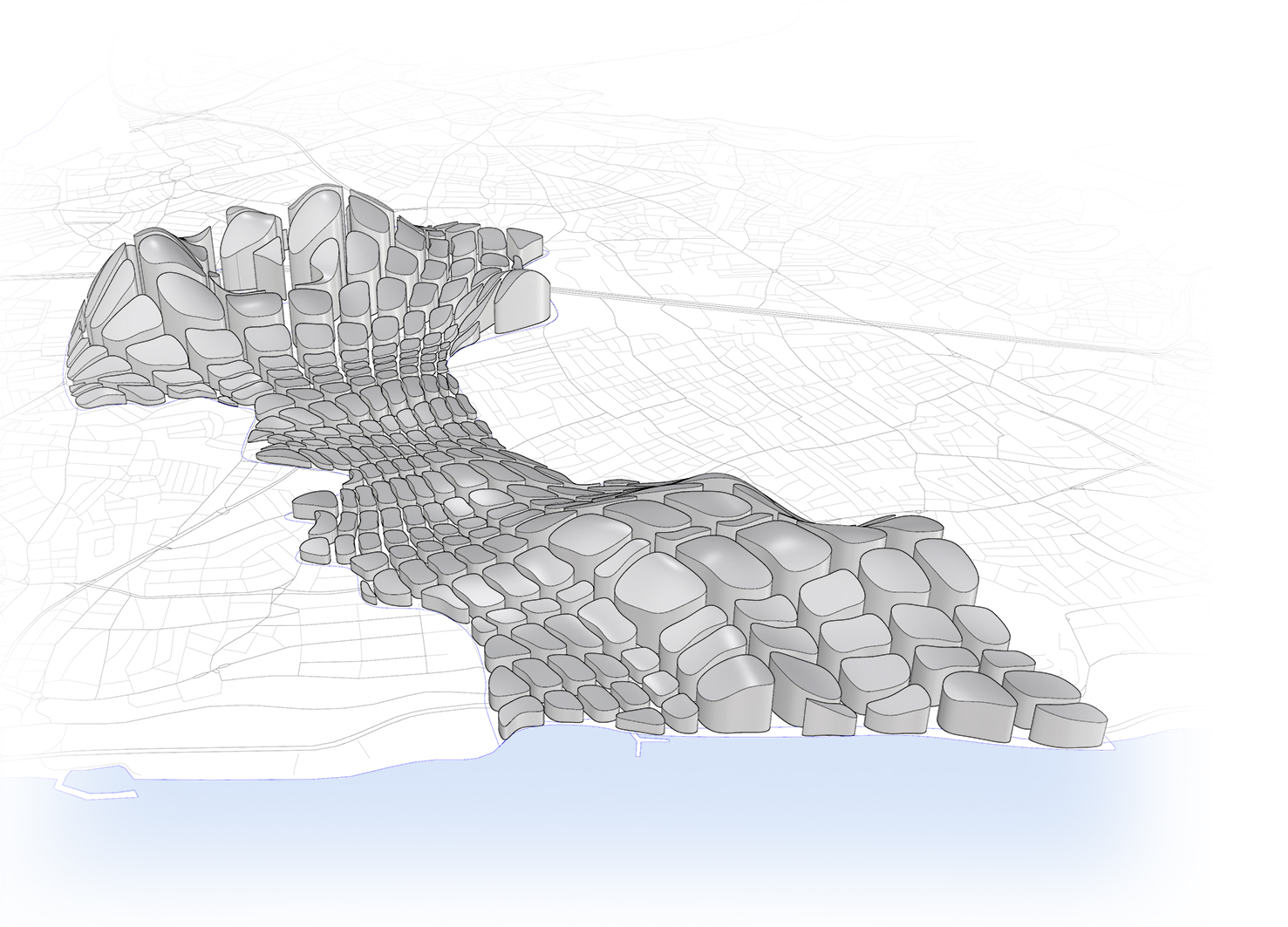
Extrusion By Area